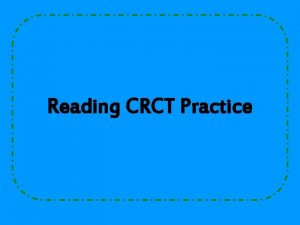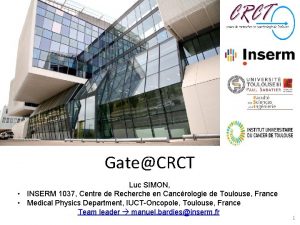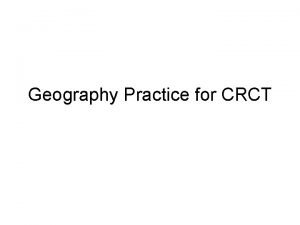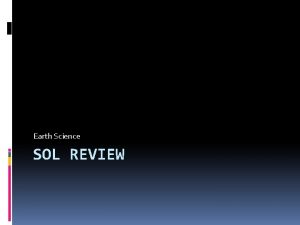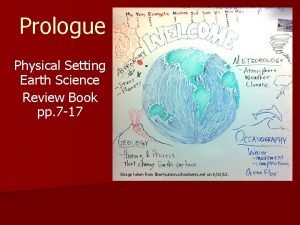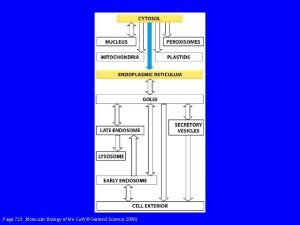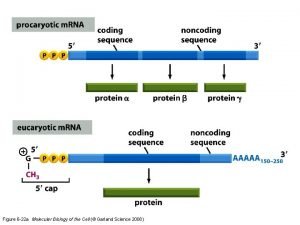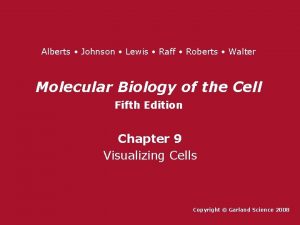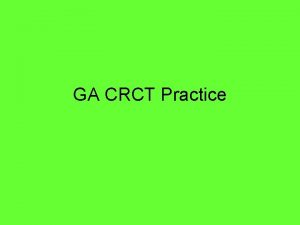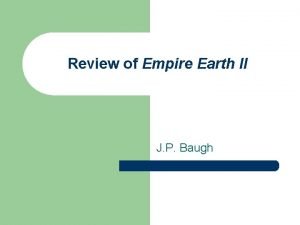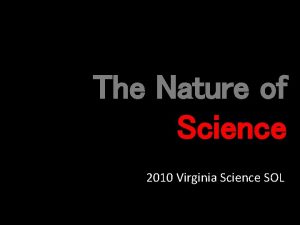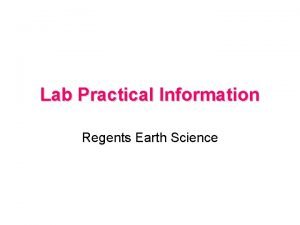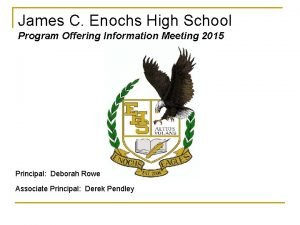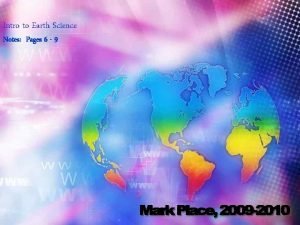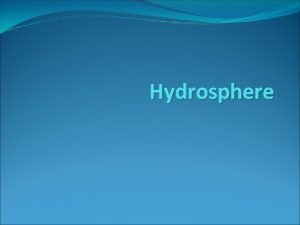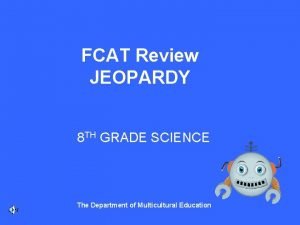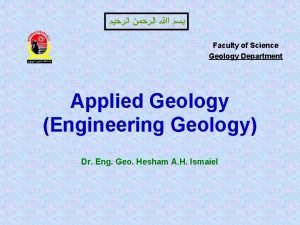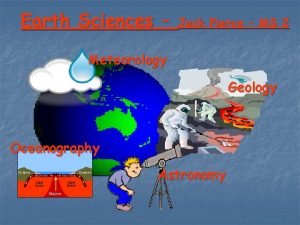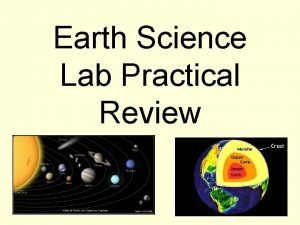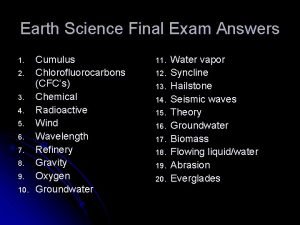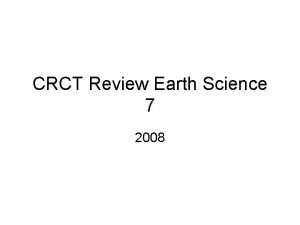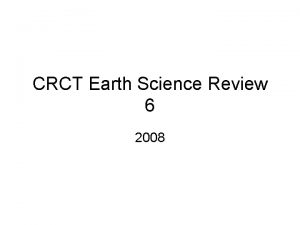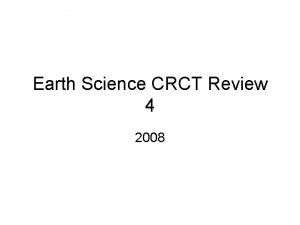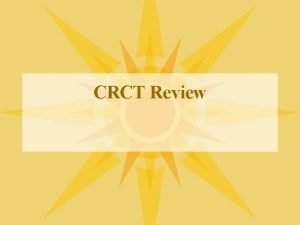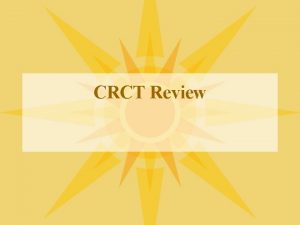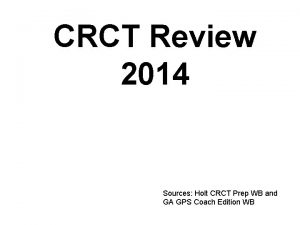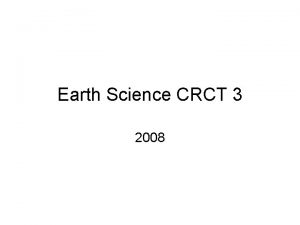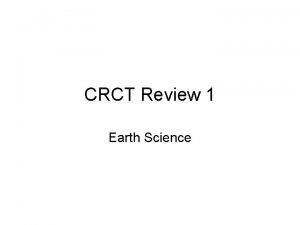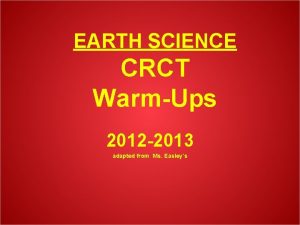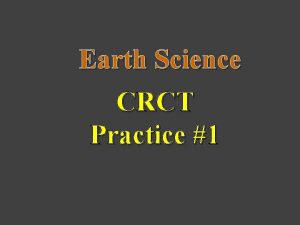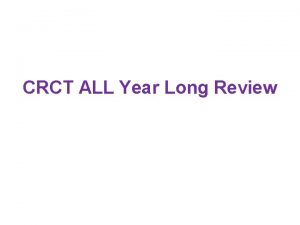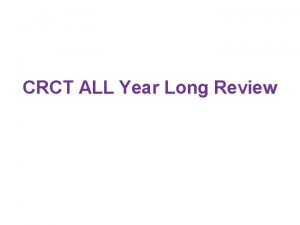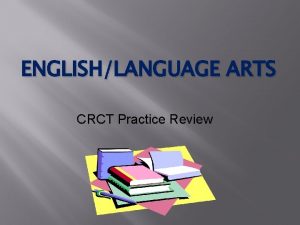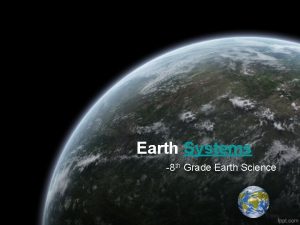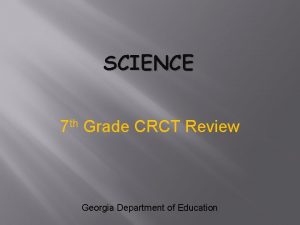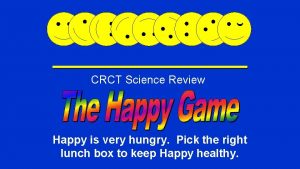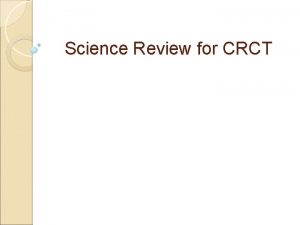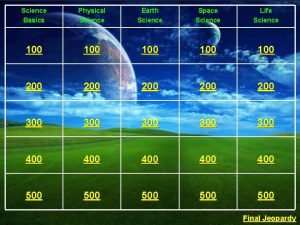CRCT Review 2 Earth Science 2008 1 Which





























- Slides: 29

CRCT Review 2 Earth Science 2008

1. Which of these will cause the greatest high tides? • A. • B. • C. • D.

2. Which is the warmest climate zone? A. Arctic Zone B. Temperate Zone C. Tropical Zone D. Intermediate Zone

3. Sunlight is not currently used as a major source of energy. Why not? A. Not enough sunlight reaches Earth to meet our energy needs. B. Economical ways to capture and store large amounts of solar energy have not been developed. C. Using sunlight for power will keep plants and animals from getting the energy they need. D. Our reserves of gas and oil will last for several hundred years so there is no need to change to solar energy.

4. Which event in the life cycle of a star causes it to begin to glow? A. The particles making up the star repel each other. B. The temperature of the star mass increases. C. The matter making up the star condenses. D. The neutrons in the star begin to spin.

5. Which type of eclipse occurs whenever the Moon passes through Earth's shadow? A. lunar B. solar C. total D. partial

6. Which of the following is a renewable source of energy? A. Natural gas B. Coal C. Oil D. Falling water

7. Granite is a kind of A. energy. B. fossil. C. rock. D. mineral.

8. Which is the best indication of an approaching storm? A. a sudden increase in wind speed B. a decrease in barometric pressure C. a clearing sky after a cold front passes D. a sudden drop in the humidity

9. Large, dark clouds that produce thunderstorms are called A. stratocumulus clouds. B. cirrostratus clouds. C. altocumulus clouds. D. cumulonimbus clouds.

10. How would the measurable properties of a golf ball change if it were moved from Earth to the Moon? A. It would have the same mass, but a different weight. B. It would have the same weight, but a different mass. C. It would have the same density, but a different mass. D. It would have the same mass, but a different density.

11. Which of the following lists Earth, Jupiter, the Moon, and the Sun in order from largest to smallest? A. Jupiter, Earth, Sun, Moon B. Sun, Jupiter, Earth, Moon C. Sun, Jupiter, Moon, Earth D. Jupiter, Sun, Earth, Moon

12. Which term refers to the area at the seashore that is underwater during high tide and exposed during low tide? A. intertidal zone B. neritic zone C. open-ocean zone D. mid-ocean zone

13. Which of these is the most important function of the ocean? A. giving off water vapor into the atmosphere B. supplying people with chemicals C. warming up large nearby landmasses D. generating electricity

14. Which change would result in the same season year-round, everywhere on Earth? A. Earth moving at least twice as fast in its orbit as it does now B. enlarging the diameter of Earth's orbit until it is much farther from the Sun C. straightening the tilt of Earth's axis to be 90° to the plane of Earth's orbit D. changing Earth's orbit so it would always be the same distance from the Sun

15. Ricardo has an igneous rock in his rock collection. Where did this rock most likely form? A. in a volcano B. on a forest floor C. on a coral reef D. at the bottom of a river

16. Artificial satellites are grouped into all of the following categories except A. commercial. B. meteor. C. scientific. D. secret military.

17. Earthquakes are most likely to occur where A. the pressure cracks thin areas of Earth's crust. B. heat causes the mantle to expand. C. bubbles of magma rise to the surface. D. one crustal plate moves under another.

18. Which of the following describes a comet? A. a solid ball that circles one planet B. a cluster of stars C. a bright ball with a tail D. a hole in space

19. Your community is planning to build a new sanitary landfill. In choosing a location for the landfill, the most important environmental consideration should be A. the cost of the land. B. the location of the groundwater. C. proximity to an industrial park. D. accessibility to a major highway.

20. A deep well or mine shaft goes through which layer or layers of Earth? A. crust only B. mantle only C. crust and mantle D. mantle and core

21. It is about 28 days from one full moon to the next. This is because 28 days is about the time it takes for one A. revolution of the Moon around Earth. B. revolution of Earth around the Sun. C. rotation of the Sun. D. rotation of Earth.




22. Which contains the greatest amount of Earth's freshwater? A. groundwater B. oceans and seas C. lakes and rivers D. glaciers and polar ice cap

23. London is much farther north than Chicago, yet it is warmer in London in the winter than it is in Chicago. Why is this true? A. Waters around England are warmed by many underwater volcanoes. B. London receives more sunshine in the winter than other places farther south. C. London's climate is affected by warm ocean currents that flow from the south. D. The Sun's rays shine at a higher angle in London than in Chicago.

24. What characteristics do scientists measure to determine the temperature and composition of stars? A. the positions of the stars in the galaxy B. the light radiated from the stars C. the proximity of the stars to each other D. the speed at which stars are moving

Which position of the Moon could cause a solar eclipse? • A. 1 B. 2 C. 3 D. 4
 Crct practice
Crct practice Crct cmh
Crct cmh Crct practice
Crct practice 2008 2008
2008 2008 Earth science lab practical
Earth science lab practical Environmental science final exam review
Environmental science final exam review Earth science sol
Earth science sol Earth science review book
Earth science review book Earth science final exam
Earth science final exam Earth science prologue review
Earth science prologue review Favorite subject is science
Favorite subject is science Garland science 2008
Garland science 2008 Molecular biology of the cell
Molecular biology of the cell Garland science 2008
Garland science 2008 Which phrase best describes the focus of ecology? *
Which phrase best describes the focus of ecology? * Empire earth 2 review
Empire earth 2 review Modern earth science
Modern earth science Earth science sol 2010
Earth science sol 2010 Earth science regents part d
Earth science regents part d Earth science lab practical
Earth science lab practical Earth science grade 9
Earth science grade 9 Dynamic equilibrium earth science
Dynamic equilibrium earth science Which is part of the hydrosphere?
Which is part of the hydrosphere? Earth science jeopardy 8th grade
Earth science jeopardy 8th grade Geology earth science definition
Geology earth science definition Earth science meaning
Earth science meaning Astronomy definition earth science
Astronomy definition earth science Earth science vs geology
Earth science vs geology Earth science lab practical
Earth science lab practical Earth science semester 2 final exam answers
Earth science semester 2 final exam answers
